Shellfish are some of the most fascinating and varied sea creatures out there, although few people think of them outside of a food source. But crabs, much like their cousins the lobsters, are surprisingly diverse.
Don’t believe us? Here are 13 different types of crab (out of more than 4,500 species) to prove our point.
Types of Crabs
1. Blue Crab
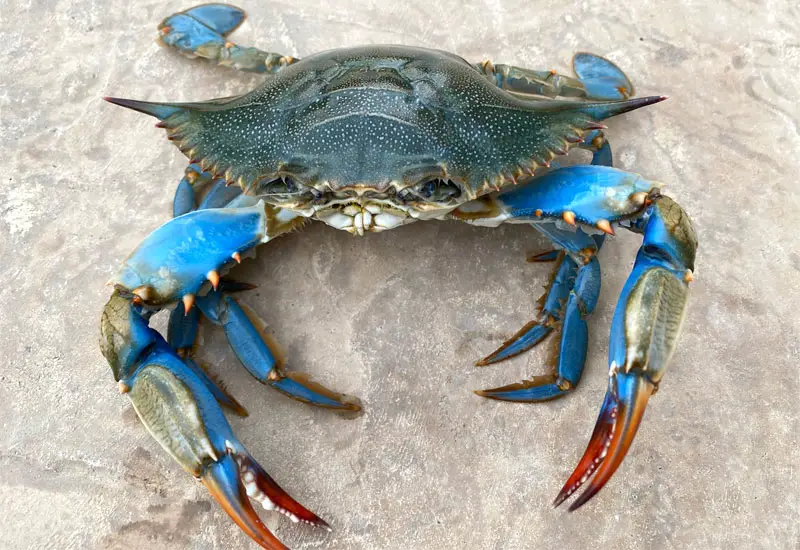
These beautiful shellfish are some of the most popular food crabs and bear a bluish to green color on their limbs. They vary in size, with some being only 3.5 inches and others growing as large as nine inches across.
Their hind legs have specialized paddles for swimming and the carapace resembles an arrowhead with the tip broken off, leaving behind pointed sides absent from most other crabs.
Found in many places around the world, blue crabs are most commonly harvested along the Eastern Seaboard of the US, Japan, the Gulf of Mexico, and along European shores.
2. Coconut Crab
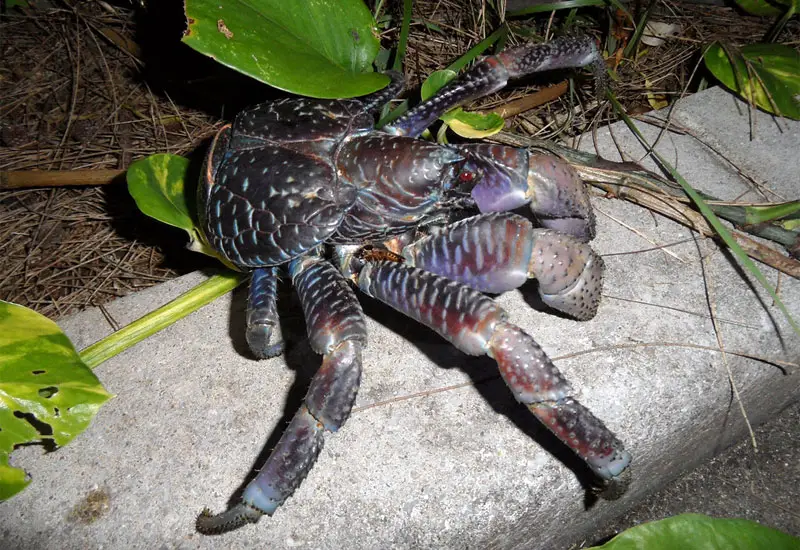
This is perhaps one of the strangest types of crab you’ll ever meet, in both appearance and behavior. In fact, they’re so unique that they actually have their own genus despite being a single species (Birgus latro).
You see, these crabs can actually drown and are considered the largest land-based arthropod in the world.
With an appearance that has to be seen to be believed, these crabs will climb coconut palms to harvest coconuts and develop shells despite being related to hermit crabs. They can grow to a little over three feet wide by the time they’re around 50 years old and their only natural enemies (besides humans) are other coconut crabs.
3. Dungeness Crab
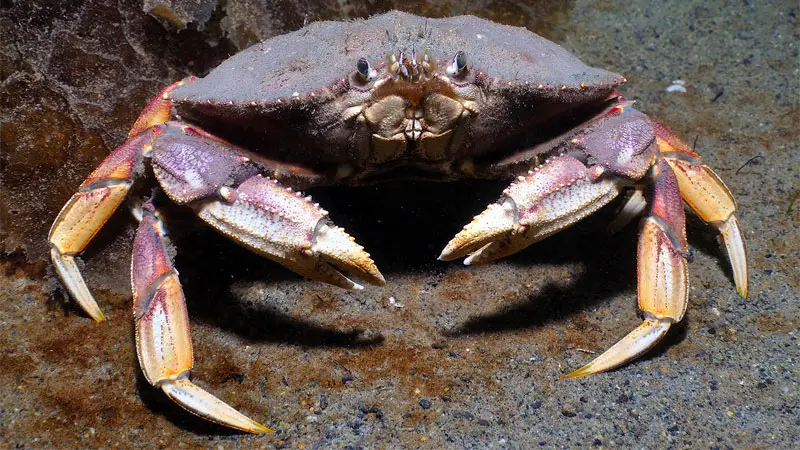
If you’ve never heard of these crabs, you’ve never tasted them, as they’re considered one of the most succulent and sweet varieties out there. In fact, they’re so delicious that it’s illegal to harvest females or specimens under a certain size.
With a lifespan of only 10 years (barring being invited to dinner), these crabs have pink meat inside a purple-tinted carapace and are found along the western coast of the US.
4. Hermit Crab
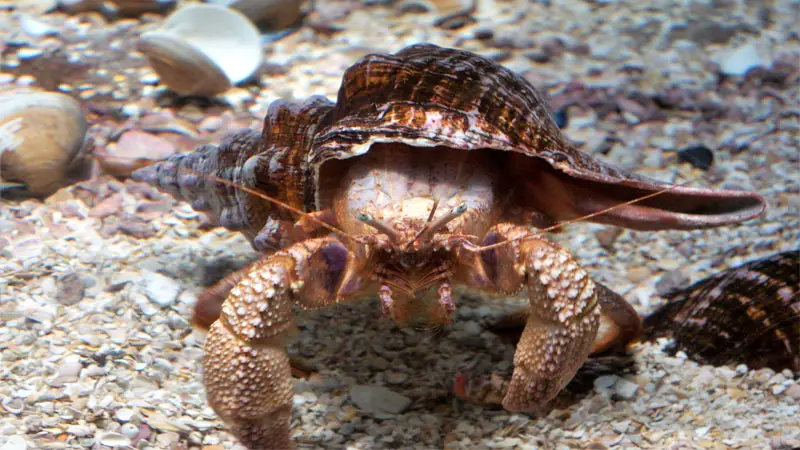
The humble hermit crab is one of the most iconic of all species because they make for wonderful pets. There are seven families of hermit crab with approximately 1,100 species. Some only live a few months, but others can live for 30 years.
They’re best known for being softshell crabs that like to hide in the discarded shells of other species, but have also been known to take up residence in discarded human objects. As pets, they tolerate handling and can even be a little playful.
Fun Fact: In the Fallout universe, most shellfish have mutated into monsters known as mirelurks, but hermit crabs were so iconic the developers have only changed their size and gave them rusted vans instead of shells.
5. Heikegani
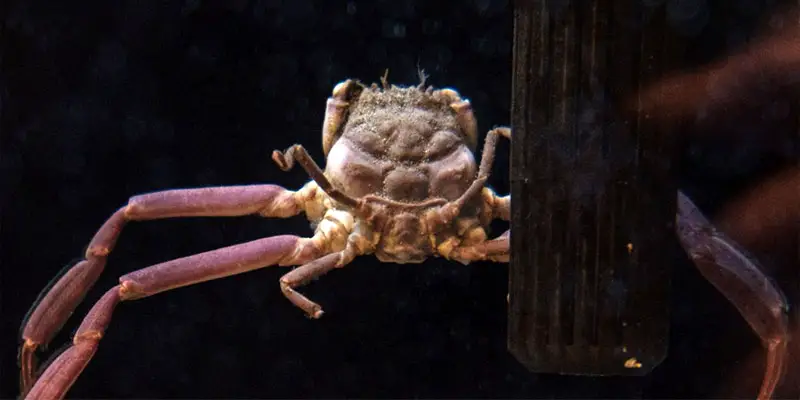
Japan is full of ghosts, but perhaps none are more incredible than the heikegani. Their story begins in the bay of Dan-no-Ura in 1185 where the fleet of the Heike clan faced off against that of the Minamoto clan.
Under Minamoto no Yoshitsune’s command, the Heike were defeated and Emperor Antoku was killed. Yoshitsune later committed seppuku after a rivalry with his brother Minamoto no Yorimoto (who went on to become Japan’s first Shogun) led to his betrayal and defeat at the Battle of Koromo River. But what does this story have to do with crabs and ghosts?
Dan-no-Ura happens to be the home of a species of crab (Heikeopsis japonica) with carapaces that closely resemble the masks of traditional samurai armor. As a result, the locals would sometimes look into the waters and see what looked like the faces of the fallen Heike staring back at them.
6. Horsehair Crab
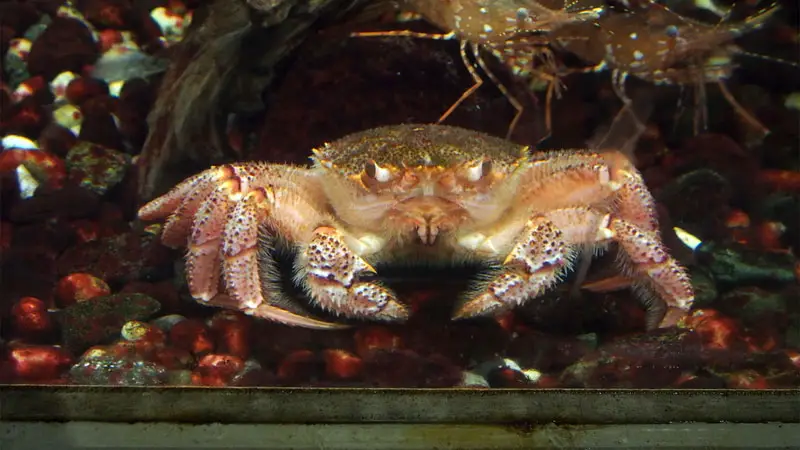
Getting its name from the spiky hairs on its body, these crabs are brown with orange dots covering their bumpy carapaces. They’re found in Alaska and northern Japan, the latter of which serves it up as one of the most prized varieties.
Its meat (and there’s a lot for the body size) is said to be sweet and very delicate, and the most common cooking method is boiling in saltwater.
7. Horseshoe Crab
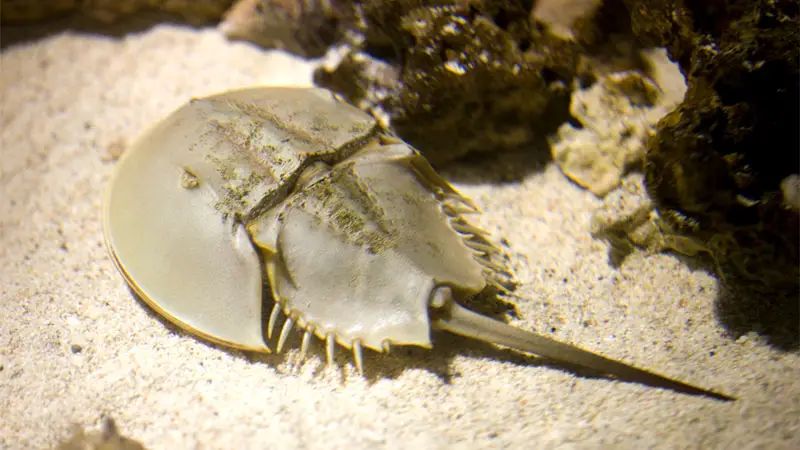
You can’t talk about shellfish without hitting at least one species that doesn’t belong. In this case, it’s the living fossil called a horseshoe crab which is actually related to arachnids.
Their round, pointy-tailed bodies are very unique, and despite the appearance are quite harmless and even edible. Some varieties, like the tri-spine and Chinese horseshoe crabs are unfortunately considered endangered.
See Also: 4 Types of Coral Reef
8. Japanese Spider Crab
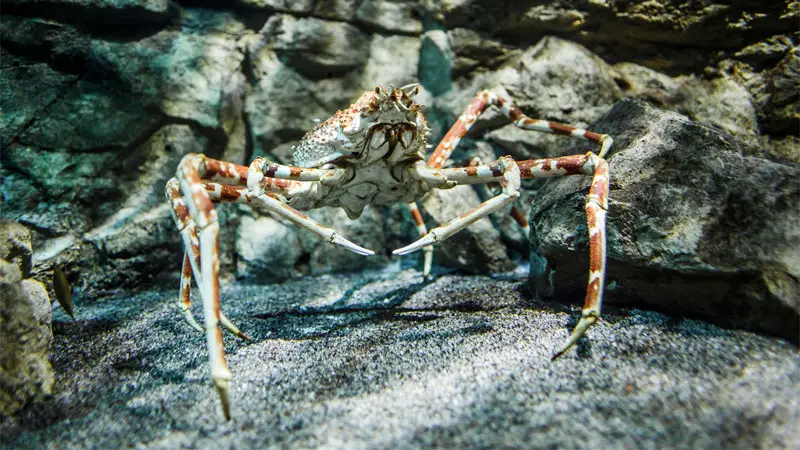
There are a lot of different spider crabs in the world, but Japan is home to the most terrifying one. With a span of up to 13 feet, these spider-like crabs only have a 16-inch body and can weigh as much as 45 pounds!
They’re considered a Japanese delicacy, but you might wish to run the other way if you saw one of these walking towards you.
While not aggressive, their claws are known to cause injury when the crab feels threatened, and are capable of ripping open mollusk shells. Overfishing has left these impressive creatures vulnerable, despite laying as many as 1.5 million eggs in a single season.
9. King Crab
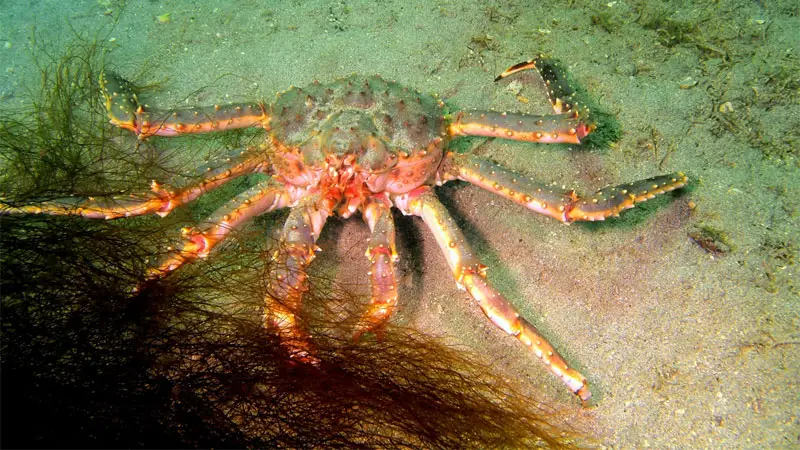
Some of the largest crabs in the world, some species of king crab can have a span of 10 feet and weigh as much as 25 pounds. Despite this, their legs and claws are the only edible parts.
But what meat they do provide is snowy white and so delicious that it’s illegal to harvest females.
Read Also: 20 Types of Eels
10. Pea Crab
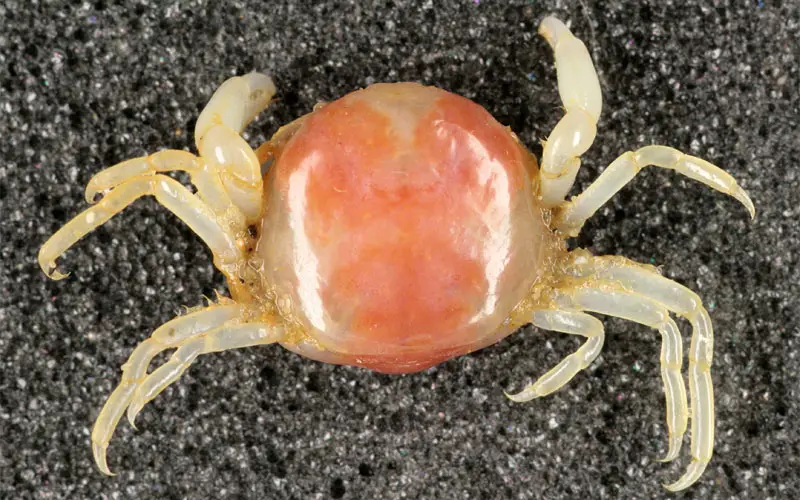
Since we’ve covered the largest crab, it’s only fitting to also talk about the smallest: the pea crab. With bodies ranging from a pea to a dime in size, the males have a pale yellowish grey color with patches of slightly darker brown while the females are translucent with red and yellow organs showing through.
Pea crabs are parasitic in nature, invading the mollusks, oysters, parchment worm tubes, sea cucumbers, and many other species. Once inside, they use the host for shelter and steal food.
11. Peekytoe Crab
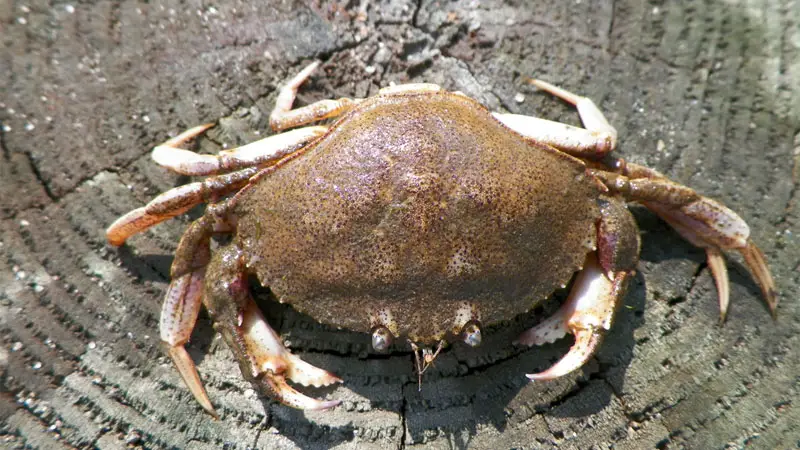
A good example of how cute nicknames can be dangerous, this Maine native was largely ignored until it was given its nickname in 1997. At that point, it was also discovered these little 5-1/4 inch crabs are quite tasty and have attractive speckled meat.
In fact the meat is so good you’ve probably had peekytoe in your salad or crab roll without knowing it.
12. Snow Crab (AKA Rock Crab)
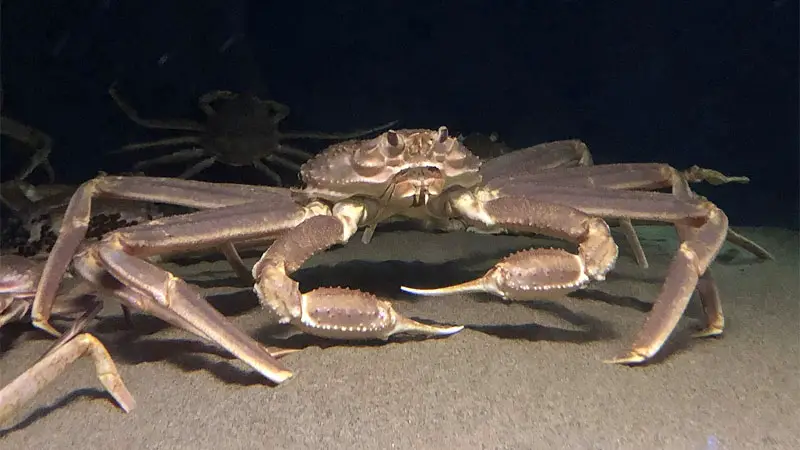
One of the most popular types of crab for food, these little guys tend to have a leg span of about seven inches. They get their name for the snowy white meat which is easily accessed thanks to their thinner shells. They tend to migrate to deeper waters as they age.
Did You Know? Snow crabs have a small, circular groove at the base of their legs which allows them to cut off another leg if they’ve become trapped or are grabbed by a predator. A new leg will grow out of the scar of the old one, making this a gruesome but efficient means of escape.
13. Stone Crab
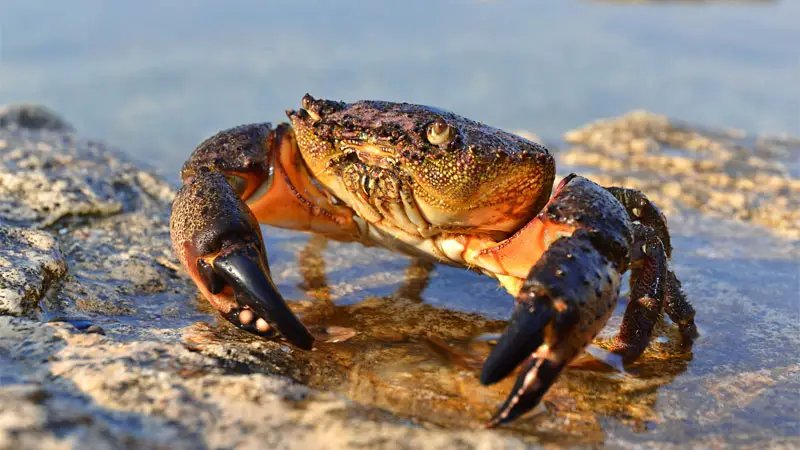
Speaking of gruesome, the fate of the stone crab is rather horrific. These crabs have tasty meat, but the only edible part happens to be inside the claws, which are protected by a rock hard shell.
These poor critters are often pulled up by fishermen, who then rip off one claw and toss them back into the water.
The claw will regenerate after about 18 months, at which point the poor crab will have another claw ripped off. Because the meat can have a nasty iodine taste when not kept frozen, it’s actually a law that you must cook a rock crab’s claw for at least seven minutes, then immediately put it on ice.

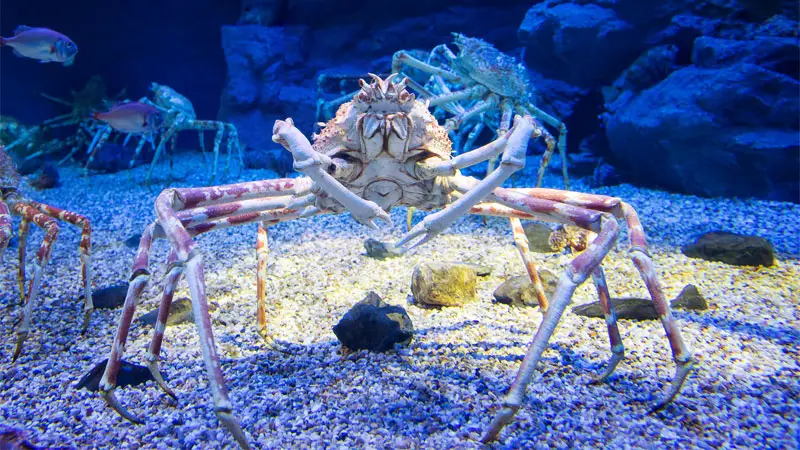
I just wanted to let you know that while Minamoto no Yoshitsune was on the winning side, it was his older half-brother Minamoto no Yoritomo who became the first shogun of Japan (and subsequently pursued Yoshitsune into the northern part of the country up til his death).
You are indeed correct. Minamoto no Yoshitsune commanded the clan during the Battle of Dan-no-ura, but later sided with Emperor Go-Shirakawa only to be betrayed by Fujiwara no Yasuhira, who was under pressure by Minamoto no Yorimito. The latter went on to become the first shogun. The typo has been fixed.
What time of year, can you catch stone 🦀 crab?